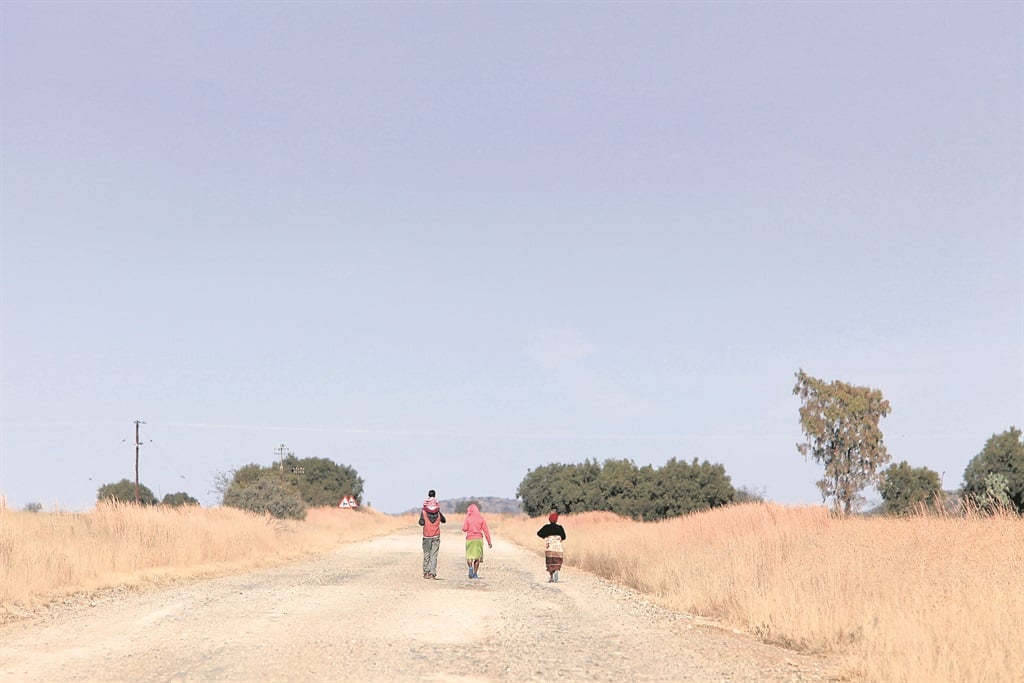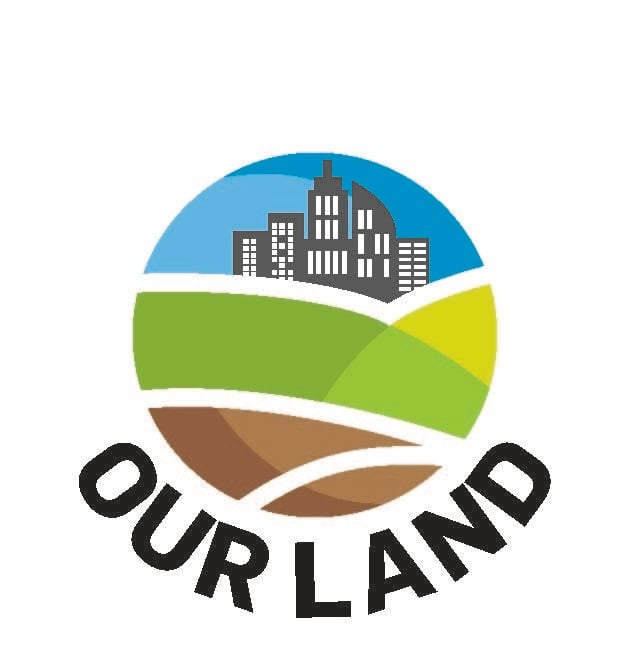Luke Alfred and photographer John Hogg retrace the steps of Sol Plaatje’s ‘tour of observation’ following the devastating Natives Land Act of 1913.
Early one morning in the first week of July 1913 an unusual group of passengers boarded an east-bound train at Kimberley station.
They were travelling with bicycles, notebooks and pens and, as the sun rose, they shuttled across the winter veld as far as Bloemhof, just inside the Transvaal border.
The following morning they woke, left their luggage with the local mission school teacher and mounted their bicycles, peddling to the diamond diggings on the banks of the Vaal River.
They had notebooks at the ready and their mission was hard-nosed: they had come to find evidence of the dispossessed, those former African sharecroppers who had been forced off the land by the infamous Natives’ Land Act of 1913 and flooded into the Transvaal like the waters of the river they had just crossed.
Dubbing this a “tour of observation” they wanted to see for themselves the effects of the act, to witness the tangible effects of legislation that had remained abstract.
One of their number, a short, round-faced man with a sturdy mission-school education and penchant for tweed suits, wrote a book about his travels.
His name was Sol Plaatje and his book, published after much struggle in 1916, was called Native Life in South Africa.
For many reasons – literary, political, sociological – the book became famous.
The best reason for its fame (and continuing fame) is that it documents – in sometimes harrowing detail – the founding of modern industrial South Africa.
The legislators didn’t like the idea of partially autonomous black sharecroppers, folk who helped a farmer plant and harvest while taking a small share of the crop in return.
They preferred servants and labourers with no independent access to, say, a small herd of cattle.
Literally between a rock and a hard place, many sharecroppers voted with their feet after the act had been passed.
They gathered their possessions and walked off farms on which they’d worked for years. After a summer of drought and a winter of cold, they left their homes to face a perilous future.
There was another compelling reason for the Natives’ Land Act. On the Witwatersrand far away, the mines were facing a labour crisis. The experiment with the importation of cheap Chinese labour had run its course.
The Union government needed to find a means of re-directing the self-sufficient labouring poor off the land.
If people weren’t voluntarily going to come to the cities, they needed to be prodded there, like cattle.
The foundations of our modern industrial economy were being laid, brick by coercive brick.
If you walk along the platform at Kimberley Station today you will find it largely as Plaatje and his fellow-travellers found it that July morning 105 years ago.
Yes, there are two bright-blue diesel locomotives squatting on the track but, in other respects, the scene is peaceful and unchanged.
The wrought-iron latticework of the platform awnings is as it was way back when and the platform has been recently hosed-down, awaiting its next contingent of snap-happy Rovos Rail travellers.
Walk further down the platform and there’s a gigantic magnolia tree that must have been there in Plaatje’s day.
Idle further still into the shunting yards behind the mainline station and you can see church spires and steeples on three of the four hands of the compass, a quick glimpse through history to the Kimberley of once-upon-a-time.
In the little Transnet museum tucked away at the end of the main platform there are collections of railways’ lamps, old black-and-white photos of the track that was once laid across South Africa.
There are cutaway sections of old SA Railway (SAR) carriages, with a mannequin sitting demurely on a green leather seat.
All the appurtenances that made railway travel so ordered and luxurious are here.
The branded white SAR/SAS crockery; the tin wash basins and the dormer windows; the water canisters at the end of the carriage, strapped into place with a brown leather thong.
Despite the helpful attentions of Carine Viljoen, the curator, the museum has a vaguely threadbare feel. No mention is made of Plaatje and his contingent’s trip to Bloemhof during what he called “Black July” all those years ago.
This is not to say that Kimberley has forsaken Plaatje. The municipality is named after him, as is the university. There is a statue of him in the middle of one of the town’s traffic circles.
There is a little Plaatje Museum on Angel Street and he is buried in the West End Cemetery. Indeed, Plaatje, his name and his image, abounds.
Thanks to Johan Cronje, the curator of the museum and library, we know that Plaatje’s Dutch-sounding surname probably came from his grandfather or grandfather’s brother, who was flat-headed and so called “Plat-ene”, which, in turn, became, “Plaat-je”.
Educated by German missionaries, Plaatje was a telegraph messenger and a letter carrier at the Kimberley Post Office; a lifelong teetotaller, he loved Shakespeare, played indifferent cricket and fathered six children.
He was a newspaperman and stinging editorialist; he was also a clerk and court interpreter during the siege of Mafikeng.
“One can only imagine what it must have been like for him to write out letters of execution,” says Cronje.
Sixty kilometres outside Kimberley is the hamlet of Boshof, the closest village to the farm on which Plaatje was born.
The small museum was closed on the morning we visited, so it is difficult to say whether Plaatje’s presence hereabouts is recognised in any way.
With its old red-brick churches, freshly built cooperative store and cut-price takeaways (“Gompie Kafee Wegneem etes”) every façade hereabouts looks like something you might have seen before: such as a sumptuous, nostalgia-drenched painting by Walter Meyer, for example.
Turn a dusty corner and then another and you arrive at a different view: the township, with corrugated tin roofs twinkling in the morning sun.
Such a township – and townships generically – are what often became of the people forced off the land in 1913.
If Meyer is part of this broad landscape – and part of the sentimental longing for the truth of this landscape – so is Plaatje.
He writes about this landscapes’ dark side. What happens in the shadows where it is difficult to see.
As much as anything else, he animated this land, giving it shape and depth. He detailed the lonely horrors of “Black July”.
He complimented white farmers’ wives for their humanity, noting that they were often the only barrier between cruelty and destitution.
In the early part of Native Life he wrote about the privations of the goat farmer Kgobadi, who had to bury his child under the cover of darkness.
“Even criminals dropping straight from the gallows have an undisputed claim to six feet (1.82m) of ground on which to rest their criminal remains,” he writes.
“But under the cruel operation of the Natives’ Land Act little children, whose only crime is that God did not make them white, are sometimes denied that right in their ancestral home.”
So we drove through this land of subtle beauties and winter sorrows. Both before and after Boshof the land was fenced-off – a never-ending game farm.
Later it gave way to agri-business, tractors with trailers wiggling down the road, doek-clad workers statuesque in the empty fields, white mounds of lime or fertiliser awaiting spreading.
The land here was being worked, apparently at peace. The debates about restitution and dispossession seemed far, far away.
From the Bloemhof train station (now boarded up with blue palisade fencing) Plaatje’s party travelled into then Transvaal and later the Orange Free State as far afield as Alice.
In a land of great political journeying (the PAC’s Philip Kgosana’s march to the Houses of Parliament; Deneys Reitz and his treks in the South African Anglo-Boer War), his is among the most heroic and curious.
It is also among the bravest. The book he wrote about his journey is not always a comfortable read because it is a kaleidoscope of parliamentary debates, anthropological reflections of African superstition, a travelogue all thrown together with snatches of autobiography.
Such jostling registers don’t always harmonise.
For all this, one thing is unmistakable: secreted behind the words in Native Life in South Africa is a great howl of anguish. It is an anguish that has never gone away.
Perhaps it never will.




 Publications
Publications
 Partners
Partners
















